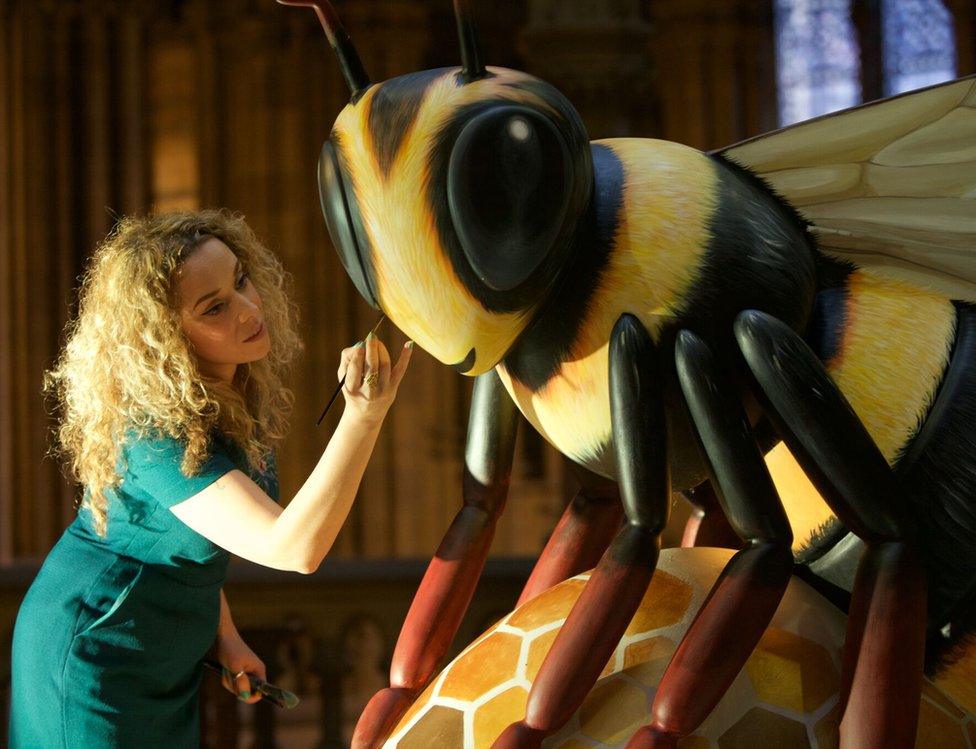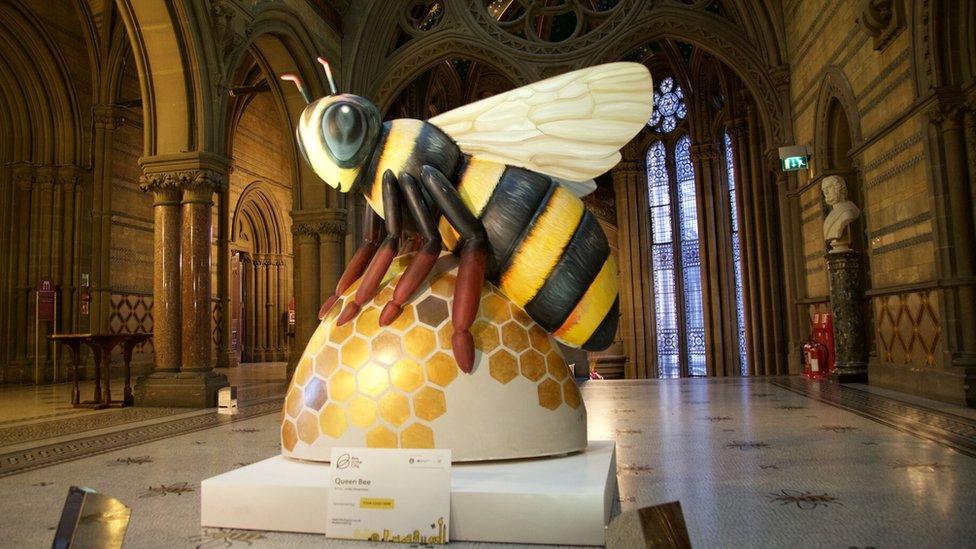Bee in the City trail to become 'Manchester's buzzword'
- Published

The trail will run for nine weeks
More than 80 giant bees are to make a buzz in Manchester for one of the city's biggest ever public art events.
Next summer's free Bee in the City trail will feature super-sized bee sculptures, each of which will have its own unique design.
All bees will then be auctioned off for the We Love MCR Charity, external.
Manchester City Council leader Sir Richard Leese said the event will build on the city's "reputation for industry and innovation".

When the trail ends, the bees will be auctioned off for the We Love MCR Charity
'Bee-am-Gallagher'
The trail will be created by public art producers Wild in Art.
They have previously worked on the Go Superlambananas exhibition for the 2008 Capital of Culture in Liverpool and the Gromit Unleashed trail in Bristol.
Organisers said the bees will be designed by local professional, emerging and amateur artists will include some Mancunian visual puns such as Bee-am-Gallagher or The Bee-Gees
Local community groups will also be invited to get involved in the event which will run for nine weeks from July to September 2018.
Council leader Sir Richard Leese said the bee "symbolises the industrious, creative and energetic spirit of Manchester and its people" and the event will build on the city's "reputation for innovation".
Sally-Ann Wilkinson, director of Wild in Art, added that the event will "become Manchester's buzzword".

Manchester's bee
The worker bees uniting Manchester
The bee has been an emblem of Manchester since the Victorian era
Several theories exist about how it became the city's symbol, but a popular one suggests a German architect described Manchester, then rich with mills and factories, as a "hive of activity"
It is a worker bee, symbolising the industry of the city and its people, and was adopted into Manchester's coat of arms in 1842
The bee can be found around the city, including on bollards and in the mosaic tiles of the Town Hall